Affenpinscher
The Affenpinscher, with its apish appearance, closely replicates a monkey, rightly nicknamed the ape terriers and monkey dogs. These small dogs measuring less than a foot has a sturdy built, with a shaggy appearance because of their dense and hard coat. They originated in Germany in the 17th century, primarily used as a ratter. However, at present, they have acquired the status of companion dogs due to their playful and fun-loving demeanor.
What Does an Affenpinscher Look Like
Head: Upright, in proportion to its body
Muzzle: Short and straight
Ears: V-shaped and high set standing erect
Eyes: Medium=sized, dark, and round
Nose: Black and straight
Neck: Short, and straight carried upright
Tail: Short, curved gently over its back
Affenpinscher Pictures

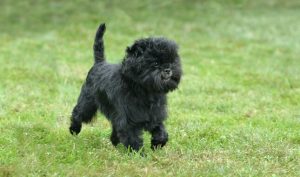
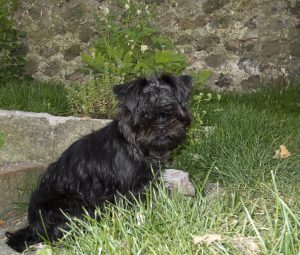
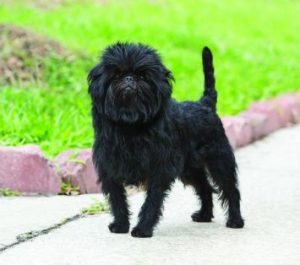
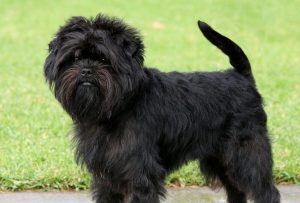
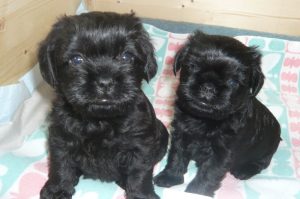
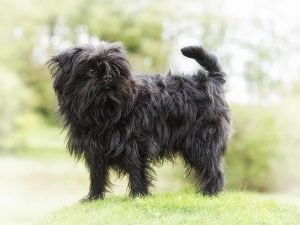


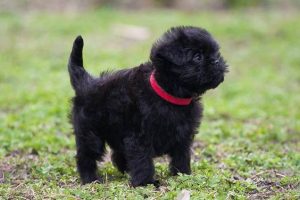
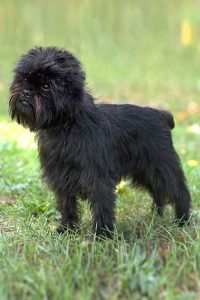

Quick Information
| Other Names | Affen, Affe, Monkey Terrier |
| Coat | Harsh and rough, appearing shaggy over its head and shoulder, merging to form a mane |
| Color | Black, black and silver, black and tan, red beige with a black mask |
| Breed Type | Purebred |
| Group | Companion Dogs, Toy Dogs, Rare Dogs |
| Average Life Span | 11-14 years |
| Size | Small (Toy) |
| Height | 9 -12 inches |
| Weight | 7 – 13 pounds |
| Litter Size | 2-3 puppies |
| Personality | Curious, playful, adventurous, active, fun-loving, stubborn |
| Good with Children | No, unsuited for homes with young kids |
| Barking Tendency | Moderate; barks out of anxiousness upon sensing a threat |
| Climate Compatibility | High |
| Do they Shed | Moderately low |
| Are They Hypoallergenic | Yes |
| Competitive Registration Qualification/ Information | AKC, UKC, VDH, FCI |
| Country | Germany |
History and Origin
This German breed has a long history, existing as early as the 17th century. Its name comes from the German word Affe translating to monkey or ape, matching its appearance. In the past, these dogs were employed in German stables to control rats and other pests that infested the place. Eventually, their role transitioned from outdoors to indoors, mostly put to work in the kitchen for ridding away mice. Over time they emerged as a dual-functioning breed, hardworking ratters in the day and dedicated companions at night.
The Affenpinscher played a significant role in developing certain breeds, such as the Miniature Schnauzer and Brussels Griffon. Affenpinscher Clubs grew in Germany and France in the latter half of the 19th century with their increasing popularity. The Berlin Lapdog Club first gave the Affenpinscher a breed standard in 1913. The American Kennel Club recognized it in 1936 and the United Kennel Club in 1957.
Temperament
Many adjectives describe their temperament, from fun-loving to playful, adventurous to stubborn, active to curious. Overall, they are loyal, bonding closely with their family. They prefer the company of adults to kids since these dogs detest rough handling or boisterousness during play. Moreover, the Affenpinscher is highly territorial about their toys and food, not willing to share with anyone. So they aren’t recommended for homes having small kids.
Overall they are quiet, occasionally barking out of agony upon sensing or experiencing any threat. They mingle well with other dogs, especially when socialized with them. However, their ratter instinct comes into play upon sighting a smaller animal, prompting them to chase. Hence, keeping them with hamsters, gerbils, ferrets, birds, rabbits, or cats is not recommended.
Care
Exercise
With its small size, the Affenpinscher makes for a good apartment dog. They are moderately active and would remain content with 30-minute exercise each day. You could either play with him indoors or take your Affen out on a brisk walk once a day. Make it wear a leash when taking it on a walk, lest it could excitedly get after any smaller animal it spots on its way.
Grooming
They have a wiry coat of a medium length that needs proper grooming at least two times a week. While brushing your dog, brush its head from behind up to the nose. Don’t miss out on combing its cheek, beard, and whiskers.
Take special care in plucking the hair growing around their eye corners and nose to prevent irritation. If you find trimming difficult, you may take him to a professional groomer.
Other hygiene needs include cleaning their eyes and ears and even brushing their teeth at least once a day to lessen the chances of periodontal disease.
Health Problems
Some common health conditions they might suffer from include hip dysplasia, luxating patella, Legg-Calve-Perthes disease, and eye problems.
Training
Their curiousness and intelligence are a boon to training, while their stubbornness is a bane. When training an Affen, one should remain firm but not rude and implement positive reinforcement techniques through rewards. Though medium on an emotional level and are not that affected when punished moderately, it is recommended not to adapt harsh training measures.
Obedience: Teaching it to follow commands quite early, since its puppy days might help keep control of its stubbornness and sudden urge to chase. First, go with the basic commands like ‘Stay’, ‘No’, and ‘Stop’. As per intelligence ratings, they understand new commands after 15 – 25 repetitions and obey the first command at a 70% efficiency rate.
Housetraining: Potty training them could be challenging enough, and you should start early the moment you have bought the puppy home. Maintaining a fixed schedule is a mandate, like every morning after it gets up, between meals, after each nap, and before bedtime. There should even be a fixed place for it to go, preferably outside your home, whenever it feels the need to eliminate. Teach it a command that they can match with their actions like “Go Potty”, or “Pee Pee” and say it firmly when they are eliminating. Once done, praise and reward them for their actions. In case of any accidents, never shout at them as that could worsen the matter.
Leash Training: Teaching them to wear a leash is a must as these dogs have the terrier-like chasing instinct inherent in them.
Feeding
Good quality dry dog food is required to keep this breed in sound physical health. When buying it from a store, you might opt for brands like Blue Buffalo, Orijen, or Purina. You can even give it a homemade diet of chicken, vegetables, and so on after consulting with the vet. They are prone to getting obese so limit the treats you give them.
Interesting Facts
- Joe, a 14-year-old Affenpinscher, clinched the Best In Show title at the Westminster Kennel Club Dog Show in 2013 when he was just 5.
- Being rare dogs in the United States, the Affenpinscher comes with a high price, up to $1000 for pedigreed pups.





